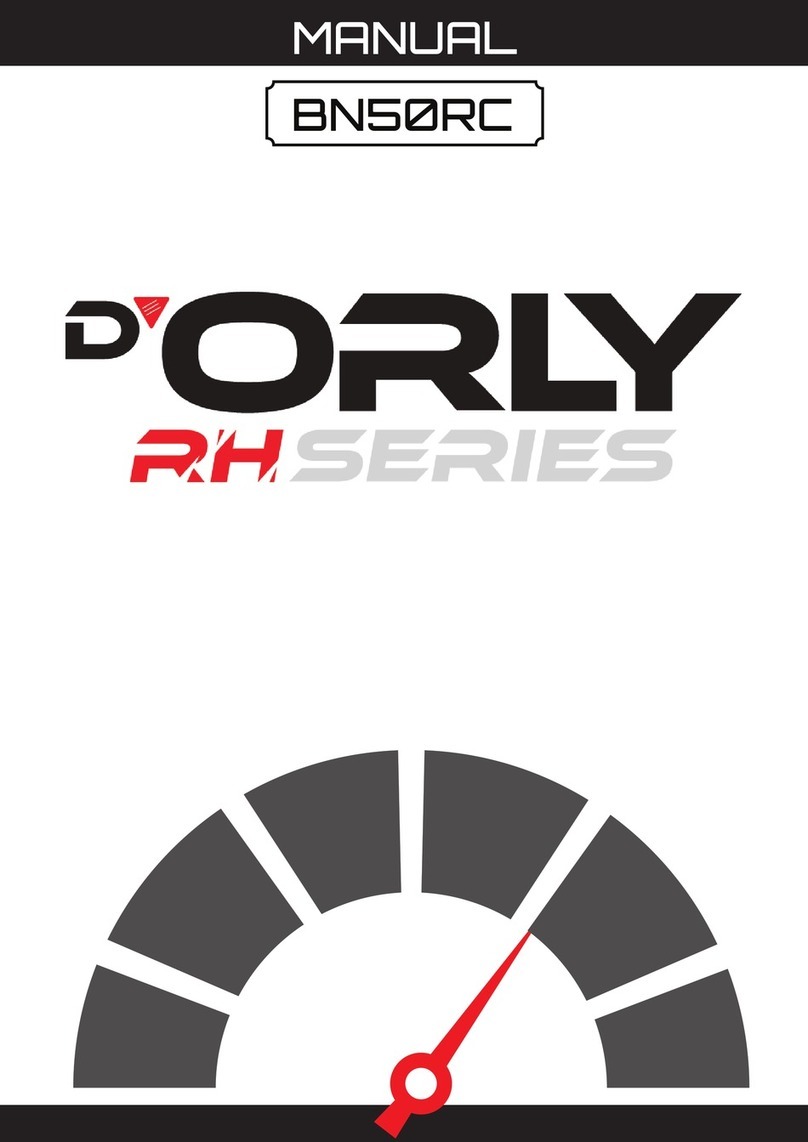
Angle Finish Nailer DA64R Http://www.aeroprotools.com 3
The characteristic vibration values for the fastener driving tool have been determined in accordance with ISO 8662-11:1999 and EN
12096 ¨C Measurement of vibration in hand-held power tools - Part 11: Fastener driving tools(see specifications).
This value is a tool-related characteristic value and does not represent the influence to the hand-arm-system when using the tool. An
influence to the hand-arm-system when using the tool will for example depend on the gripping force, the contact pressure force, the
working direction, the adjustment of compressed air supply, the workplace and the work piece support.
ADDITIONAL SAFETY INSTRUCTIONS FOR PNEUMATIC POWER TOOLS
Air under pressure can cause severe injury.
Always shut off air supply, drain hose of air pressure and disconnect tool from air supply whenever not in use, before changing
accessories or where making repairs.
Never direct air at yourself or anyone else.
Whipping hoses can cause severe injury. Always check for damaged or loose hoses and fittings.
Cold air should be directed away from the hands.
Whenever universal twist couplings(claw couplings) are used, lock pins shall be installed and whip check safety cables shall be used
to safeguard against possible hose-to-tool and hose-to-hose connection failure.
Do not exceed the maximum air pressure stated on the tool.
Never carry an air tool by the hose.
Only fasteners listed in the specifications may be used in the fastener driving tool. The fastener driving tool and the fasteners
specified in the specifications are to be considered as one unit safety system.
Quick action couplings shall be used for connection to the compressed air system and the non-sealable nipple must be fitted at the
tool in such a way that no compressed air remains in the tool after disconnection.
Oxygen or combustible gases shall not be used as an energy source for compressed air operated fastener driving tools.
Fastener driving tools shall only be connected to an air supply where the maximum allowable pressure of the tool cannot be
exceeded by more than 10%; in the case of higher pressure ,a pressure reducing valve which includes a downstream safety valve
shall be built into the compressed air supply.
Only the main energy and the lubricants listed in the operating instructions may be used for the maintenance of fastener driving
tools. Only spare parts specified by the manufacturer or his authorised representative shall be used.
Repairs shall be carried out only by the manufacturer's authorized agents or by other experts, having due regard to the
information given in the operating instructions.
Stands for mounting the fastener driving tools to a support, for example to a work table, shall be designed and constructed by the
stand manufacturer in such a way that the fastener driving tools can be safely fixed for the intended use, thus for example
avoiding damage, distortion and displacement.
Check prior to each operation that the safety and triggering mechanism is functioning properly and that all nuts and bolts are right.
Do not carry out any alterations to the fastener driving tool.
Do not disassemble or make inoperative any parts of the fastener driving tool such as the safety yoke.
Do not perform any ¡°emergency repairs¡± without proper tools and equipment.
The fastener driving tool should be serviced properly and at regular intervals in accordance with the manufacturer¡¯s instructions.
Avoid weakening or damaging the tool, for example by:
-punching or engraving;
-modification not authorized by the manufacturer;
-guiding against templates made of hard material such as steel;
-dropping or pushing across the floor;
-using the tool as a hammer;
-applying excessive force of any kind.
Never point any fastener driving tool at yourself or at any other person or animal.
Hold the fastener driving tool during the work operation in such a way that no injuries can be caused to the head or to the body in
the event of possible recoil consequent upon a disruption in the compressed air supply or hard areas within the workplace.
Never actuate the fastener driving tool into free space. This will avoid any hazard caused by free flying fasteners and excessive
strain of the tool.
The tool shall be disconnected from the compressed air system for the purpose of transportation, especially where ladders are
used or where an unusual physical posture is adopted whilst moving .
Carry the fastener driving tool at the workplace using only the handle, and never with the trigger actuated.
Take conditions at the workplace into account. Fasteners can penetrate thin work pieces or slip off corners and edges of
workplaces, and thus put people at risk.
For personal safety, use protective equipment such ad hearing and eye protection.
Fastener driving tools are operated by actuating the trigger using finger pressure.



























